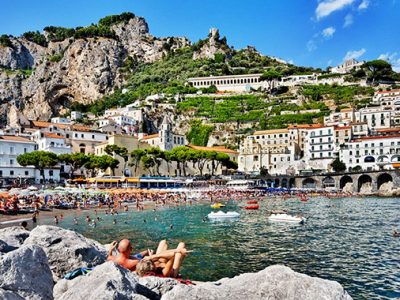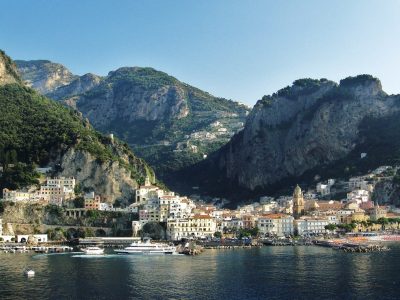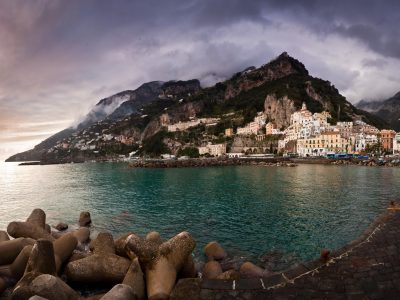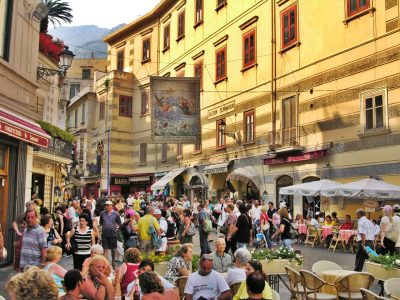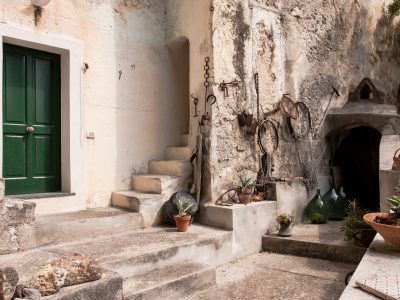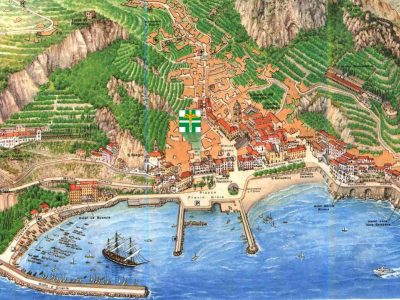Amalfi
Amalfi today: a town of less than 6,000 inhabitants, "capital", we can say, of the homonymous Coast that is among the most important tourist destinations in Italy, among the most famous in the world. A port always congested: the inevitable cruise ship, ferries to and from Capri or Positano, boats of mini - cruises along the coast. Parking lots rare and expensive but a promenade noteworthy. A monumental complex includes the magnificent Cathedral (in neo-Gothic and neo-Moorish style with Romanesque influences), the Basilica of the Crucifix (in practice, the oldest church) and the Cloister of Paradise. A historic center that besides the Paper Museum, home to a myriad of souvenir shops, bars, pubs, restaurants, groceries, craft shops ceramics, lemon liqueur or footwear etc.
Amalfi yesterday: perhaps founded by immigrants from Melfi (A - Melfi). Dominant maritime power in the Mediterranean for about three centuries, between the ninth and twelfth centuries. Covered warehouses such arsenals, to build continuously fast and well armed boats, "galee", true strength of the City-State. An area of about one hundred times the area today. Included forests rich in valuable wood, waterways for water reserves, metallurgy and the driving force, pastures for the breeding of animals and large flat areas and fertile for agricultural production. Remarkable still, is the production of fine handmade paper with ancient techniques. Absolute records of Amalfi were the birthright as an independent state (839 and was the first of the three other major Maritime Republics: Genoa, Pisa and Venice), the compass (an improvement of the Chinese invention of the magnetic needle) and the preparation of first true Maritime Navigation Code (Tables of Amalfi), still used until the sixteenth century. Tari was the name of the local currency, then spread around the Mediterranean basin, a name borrowed from the Arab world with which the reports were commercially prosperous, so that even the word "arsenal" is of Arabic origin and means "place of industry" . The inexorable decline began in the early 1139 due to political misfortunes and in 1343, even with a devastating tsunami, which will forever change the coastline, depriving the city of its large port.
The rebirth begins only with the "Grand Tour" seven - eight century and then, even more, with the beginning of modern tourism, from the late nineteenth century and the beginning of the last century; so let's go back to Amalfi today.


